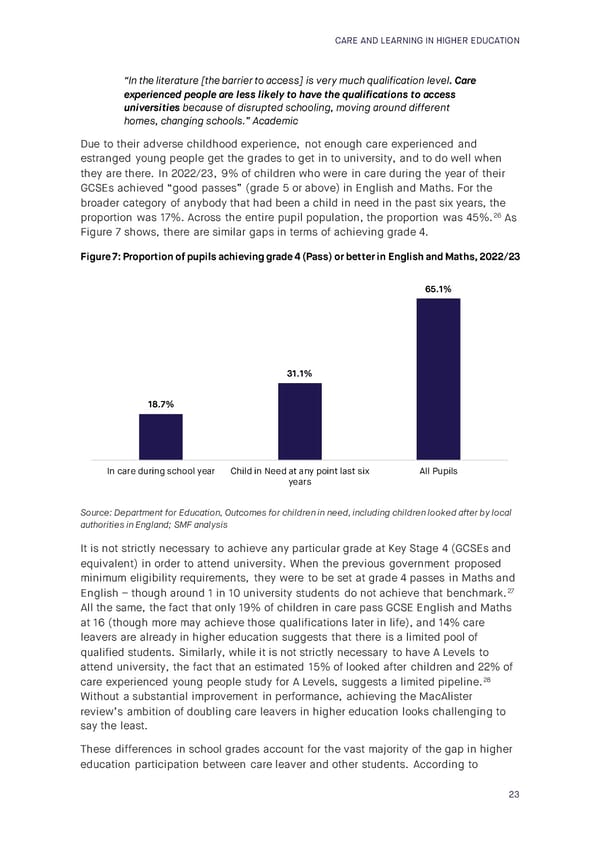CARE AND LEARNING IN HIGHER EDUCATION “In the literature [the barrier to access] is very much qualification level. Care experienced people are less likely to have the qualifications to access universities because of disrupted schooling, moving around different homes, changing schools.” Academic Due to their adverse childhood experience, not enough care experienced and estranged young people get the grades to get in to university, and to do well when they are there. In 2022/23, 9% of children who were in care during the year of their GCSEs achieved “good passes” (grade 5 or above) in English and Maths. For the broader category of anybody that had been a child in need in the past six years, the proportion was 17%. Across the entire pupil population, the proportion was 45%.26 As Figure 7 shows, there are similar gaps in terms of achieving grade 4. Figure 7: Proportion of pupils achieving grade 4 (Pass) or better in English and Maths, 2022/23 65.1% 31.1% 18.7% In care during school year Child in Need at any point last six All Pupils years Source: Department for Education, Outcomes for children in need, including children looked after by local authorities in England; SMF analysis It is not strictly necessary to achieve any particular grade at Key Stage 4 (GCSEs and equivalent) in order to attend university. When the previous government proposed minimum eligibility requirements, they were to be set at grade 4 passes in Maths and 27 English – though around 1 in 10 university students do not achieve that benchmark. All the same, the fact that only 19% of children in care pass GCSE English and Maths at 16 (though more may achieve those qualifications later in life), and 14% care leavers are already in higher education suggests that there is a limited pool of qualified students. Similarly, while it is not strictly necessary to have A Levels to attend university, the fact that an estimated 15% of looked after children and 22% of care experienced young people study for A Levels, suggests a limited pipeline.28 Without a substantial improvement in performance, achieving the MacAlister review’s ambition of doubling care leavers in higher education looks challenging to say the least. These differences in school grades account for the vast majority of the gap in higher education participation between care leaver and other students. According to 23
 Care and Learning in Higher Education Page 23 Page 25
Care and Learning in Higher Education Page 23 Page 25